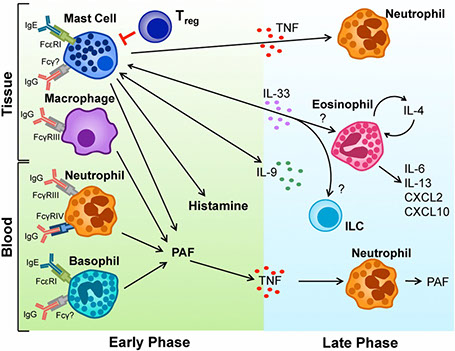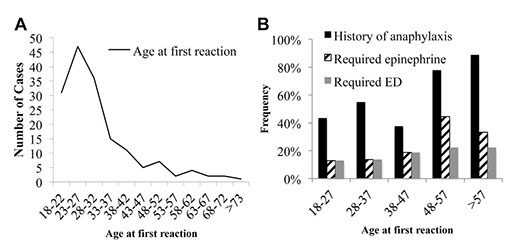- Prevalence and characteristics of adult-onset food allergy.
- Allergic mechanisms in eosinophilic esophagitis.
Eosinophilic esophagitis is rapidly increasing in incidence. It is associated with food antigen-triggered, eosinophil-predominant inflammation, and the pathogenic mechanisms have many similarities to other chronic atopic diseases. Studies in animal models and from patients have suggested that allergic sensitization leads to food-specific IgE and T-helper lymphocyte type 2 cells, both of which seem to contribute to the pathogenesis along with basophils, mast cells, and antigen-presenting cells. In this review our current understandings of the allergic mechanisms that drive eosinophilic esophagitis are outlined, drawing from clinical and translational studies in humans as well as experimental animal models.

- The immunology of food allergy.
Food allergies represent an increasingly prevalent human health problem, and therapeutic options remain limited, with avoidance being mainstay, despite its adverse effects on quality of life. A better understanding of the key immunological mechanisms involved in such responses likely will be vital for development of new therapies. This review outlines the current understanding of how the immune system is thought to contribute to prevention or development of food allergies. Drawing from animal studies, as well as clinical data when available, the importance of oral tolerance in sustaining immunological nonresponsiveness to food Ags, our current understanding of why oral tolerance may fail and sensitization may occur, and the knowledge of pathways that may lead to anaphylaxis and food allergy-associated responses are addressed.

- Publication History










